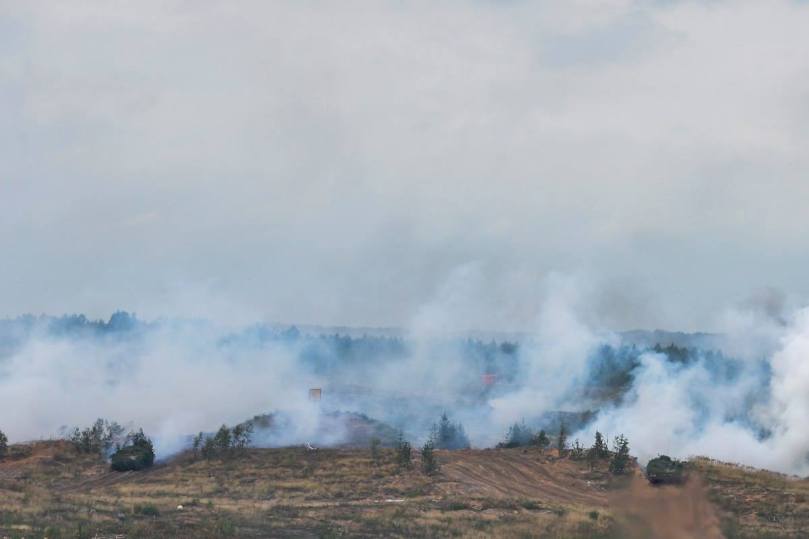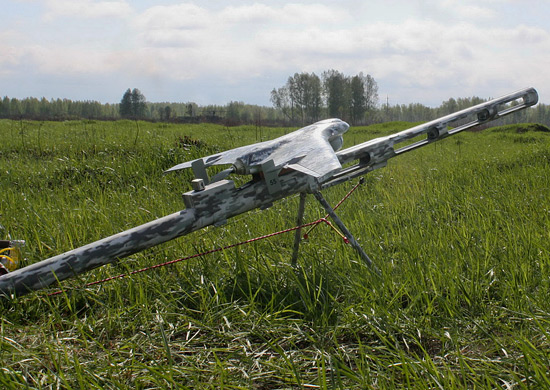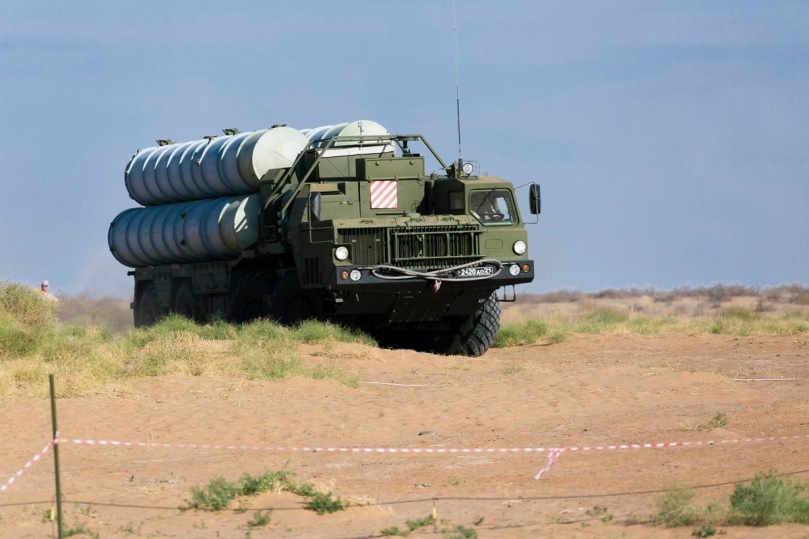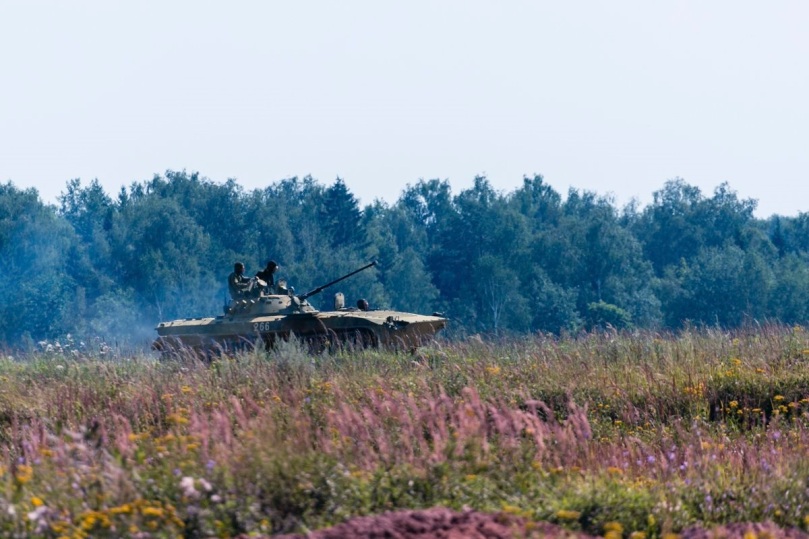The final day of Russia’s Zapad 2017 exercise just concluded. It’s over now….or is it? No, seriously, it’s probably over. Russian units in Belarus and Leningrad Oblast had a final go at it and then began to pack up their bags for a return trip to their garrisons. Although weather continued to be poor, there were some interesting moments on the last day, from VDV assaults to Tu-22M3 bomber flights over the Baltic and Norwegian Sea. Russia’s long range aviation also began waking up for some joint tests with air defense units. And an RS-24 road mobile ICBM launch, which is probably neither here nor there.
BLUF: The Russian Navy and Air Force remained active, shooting down cruise missiles, and running simulations with ground based air defenses. VDV began preparations for return flights back to base. Logistics units of various types, particularly railway troops, communications, radar, and CBRN continued specialized technical drills. Not all is quiet on the Central and Eastern Front though. Readiness checks, inspections, and some fresh exercises suggest that while Zapad is over the busy training regimen will continue for Russian forces into October. Some of these may be connected to Zapad, while others not.

Also Lithuania didn’t get invaded and Belarus seems like it will be ok
Meanwhile it’s unclear if the RS-24 Yars launches (12th and 20th) have anything at all to do with this as part of an escalation dynamic or just RVSN working off its own schedule for missile tests. Probably both, the first launch was likely RVSN doing its own testing and the second one is an open question mark – could be terminal phase of Zapad.
The exercise aside, there were other more important things on the minds of Russia’s General Staff. In Syria Jabhat al-Nusra launched an attack north of Hama which endangered a platoon of Russian MPs operating in the area together with KSO special forces. Rumor has it that most of the available rotary and fixed wing aviation Russia had available in Syria was called in to repel the attack, preventing encirclement. Russia’s MoD blamed US intelligence services for instigating the Nusra assault. From the sound of it, the last day of Zapad almost got too exciting as the real war in Syria made its presence felt.
Belarus
Borisovsky range – Lukashenko came to observe the final day of the exercise, but there was no joint photo op between him and V. Putin since they were at different ranges. The optics of collaboration and integration with Belarus were missing the personal touch. Quite possibly it was at one or the other leader’s decision not to have a joint review of forces.
It’s all great but where’s my ally? (In all seriousness probably Lukashenko doesn’t want to be seen with Putin so he can play the role of ‘unwilling ally’ and maintain options for dealing with the West)

Russia
Training continued at Luzhsky (Luga), and around Pskov, but Kaliningrad’s range Pravdinsky seemed to wrap things up.
Russian Tu-22M3 bombers conducted flights over the Baltic and Norwegian Sea, during which they were greeted by US, Belgian, Finnish, and Swedish fighters.
At Plesetsk Cosmodrome a RS-24 YARS roadmobile ICBM was launched from a Krona shelter targeting the Kura test range on Kamchatka. Zapad seems to be book ended by two RS-24 ICBM launches, a silo-based test on September 12th, and a road-mobile launch on September 20th. The connection between Zapad and these missile tests is unclear. The first launch on September 12th was supposedly delivering a newer type of reentry vehicle (or decoy?)

Another interesting exercise on this day: Russia’s air force practiced responding to terrorists hijacking a civilian airliner out of Moscow and redirecting it north (maybe Swedish insurgents). Two Su-27s on alert responded while Russia’s ground based air defenses tracked then plane and prevented it from leaving Russian airspace.
VDV Airborne – 76th Division crossed a river in their BMD vehicles and then assaulted enemy positions from behind enemy lines near Pskov. After this decisive action NATO units surrendered. Meanwhile, after completing the final day of drills, the VDV battalion airlifted into Kaliningrad reported to be preparing for departure back to their garrison. Looks like they’re packing up to go home. However it was not the best conclusion to the exercise for the VDV branch. The commander of Russia’s VDV was involved in a terrible automotive accident near Murmansk, and was taken to the hospital with serious injuries, along with aides who were in the vehicle with him.

Heading home

VKS Aerospace Forces – Su-35s in Telemba (Buryatia in eastern Siberia) shifted to an airbase in Zabaykalky Krai took on incoming enemy cruise missiles. Russia used Kh-55 target practice missiles, launched by Tu-95MS strategic bombers, as targets for air defenses at Telemba. Yes Russian strategic bomber aviation woke up to get itself in the game. This is taking place in the Eastern MD but seems to be a VKS + LRA exercise. Might be more strategic bomber drills to come, after all nuclear exercise season tends to follow in October.
Russia’s Aerospace Forces are heading back to their airbases. Well, not everyone, clearly Tu-22M3s had a busy day. Altogether the list of fixed wing and rotary aviation involved includes: Su-35s, Su-30SM, Su-34, Su-24M, Su-25, Mig-31BM, Mig-29SMT, Mi-28N, Mi-35, Mi-8, Ka-52. Special mention has been made throughout about how bad the weather was during the second half of the exercise.

Central MD – In Chelyabinsk there is an inspection of the 90th Armored Division (by the border with Kazakhstan). Apparently 25-29 September there will be an exercise held in Chebarkyl, which may be the Central MD’s continuation of ‘Zapad related training.’
Eastern MD – Spetsnaz units in Khabarovsk Krai were lifted by Mi-8 AMTSh helicopters together with gear and then parachuted in to assault an enemy camp, then deployed for ambush behind enemy lines.
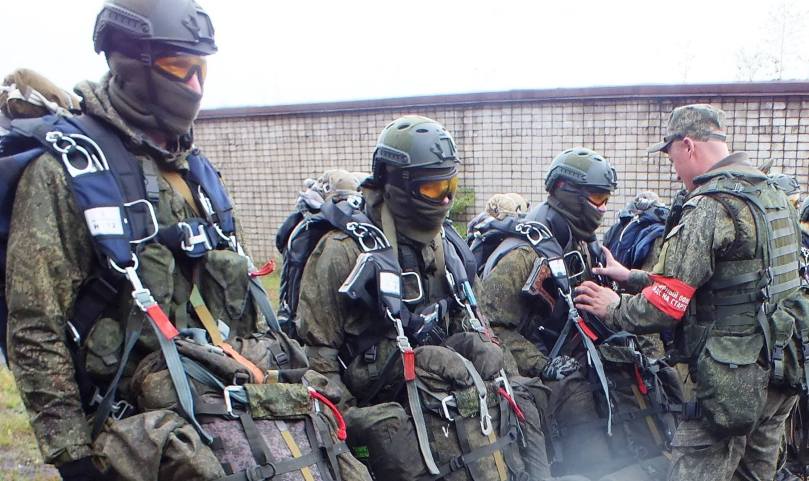
Air defense units began an exercise focused on radar detection and tracking in Amur and Primoriye. They’re fielding Nebo and Nebo-SVU radars to detect, identify and track various types of targets. Part of the scenario is looking for sources of jamming and integrating the operating picture between two different air defense zones within the Eastern MD. It comes off like they’re working on dealing with low observation aircraft, because that’s the sort of thing radars of this type are good for. About 500 servicemen involved.

Southern MD – Looks like enemy forces blew up a rail link in Kransodar and specialized technical units must respond to repair it. Railway troops, a CBRN unit, and other brigade elements completed a 200km march to the site, with 1000 servicemen and 200+ pieces of specialized equipment. Enemy forces were present in the area as well to complicate matters, and they had to practice air defense on the way.

Communications technicians created one information network across in N. Caucasus, Abkhazia, Ossetia, Armenia, and much of the Southern MD. Satellite and radio stations exchanged data while being suppressed by EW from enemy drones (probably Leer-3). Encrypted systems include Redut-2YS, MK VKS, and mobile radio stations R-166, R-419-L. About 3500 servicemen and more than 700 various pieces of equipment took part.
Russian units in Abkhazia, together with Abkhaz armed forces, destroyed enemy command posts as part of a recon-strike exercise. At the training ranges Nagvaloy and Tsabal artillery units practiced with 2s3 Akatsya, D-30 122mm towed artillery, and 120mm Sani mortars. BM-21 Grads were deployed, together with drones for targeting and recon. Data from drones was integrated via Strelets (individual soldier system) and artillery systems to deliver on short notice artillery strikes to identified targets. The point of the exercise was to workout integration between reconnaissance and the strike part of the equation. About 500 servicemen took part and 100 pieces of equipment.
Northern Fleet – Out in the Barents the surface action group led by Peter the Great (Kirov-class), together with Marshal Ushakov (Soveremenny-class), defended against a massed enemy air attack with anti-ship cruise missiles (though the targets were fired at a rate of one per minute so not exactly a massed salvo). They were backed by Mig-31s, shooting down six cruise missile targets in total launched by small missile boards (RM-120). The scenario had two phases: in the first Russian ships used their air defenses in collaboration with air support. A few were hit by S-300 Fort, one by Uragan, and two by R-33 air-to-air missiles. Phase two was close in weapons defense, involving one RM-120 target and two decoys to imitate missiles.
Meanwhile in the Arctic, Severomorsk (Udaloy-class) conducted live fire exercises, employing surface to air missiles (Kinzhal), CWIS guns, artillery, and even the troops onboard unloaded RPGs into floating targets. Pantsir-S1 (Arctic variants) practiced against various targets. The head of the Russian Navy, Adm Vladimir Korolev is personally visiting the Northern Fleet. According the MoD that’s a wrap for the North Fleet and they should be turning around for home.
Severomorsk launching Kinzhal
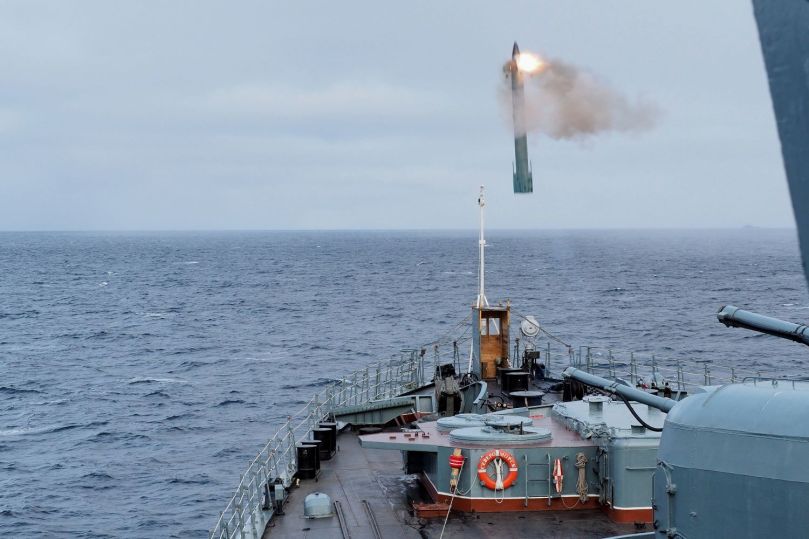
Arctic Pantsir air defense

P-15 Termit missile launched by Rubezh coastal defense system
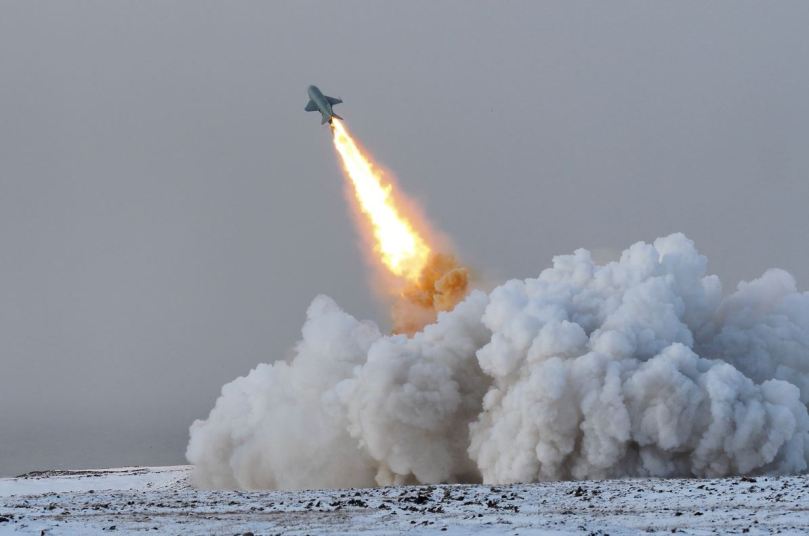
Baltic Fleet – 11th Corps is standing down and returning to their garrisons according to the MoD. Ships are due back in Baltiysk.
Black Sea Fleet – An artillery regiment of the 22nd Army Corps (BSF) is conducting artillery and air defense drills at the Opuk training range. Elements of the separate naval infantry brigade are also involved in this exercise. About 50 pieces of equipment were noted, self-propelled artillery, BM-21 Grad, and Strela-M10 short range air defense systems. The BSF’s Su-24M naval aviation squadron played enemy aviation.

Caspian Flotilla – Starting inspection and preparations across the flotilla’s ships in advance of a large exercise expected in October. Looks like they will have a busy training schedule after Zapad.
Pacific Fleet – Chinese marines are drilling in counter-terrorism at Russia’s Gornostay range, first phase of their joint exercise with PLAN for the coming week.
Russian forces in the Baltic region are beginning to return home, but the op tempo of exercise will continue into Central and Eastern MD. There may be further air defense, radar, and LRA exercises. General purpose ground forces in districts many time zones away from the scenario will continue repelling a conventional adversary as though they are part of the larger fight. Nuclear escalation was not an obvious part of the exercise, but definitely pre-nuclear deterrence was featured in R-500 launches. A more serious analysis to come – this is just a wrap up of the last day.
Notable Photos:
The Army’s strategic resource on the move (mobile kitchen)

This

Plotting which of these kids to leave in Belarus







